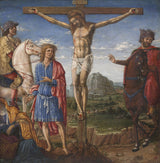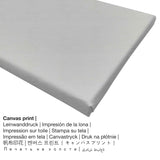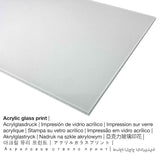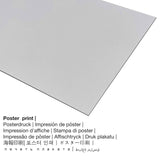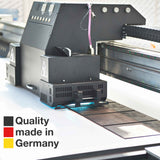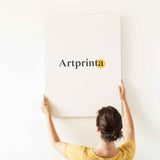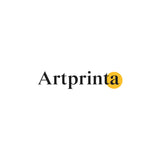Matteo di Giovanni, 1470 - Ogbugbu - mbipụta nka mara mma
Ụtụ gụnyere. Mbupu gbakọrọ na ndenye ọpụpụ.
Mkpọgide n’obe is a work of art created by Matteo di Giovanni. The version of the artwork was made with the following size: Nhazi: 39,4 x 38,1 x 4,5 cm (15 1/2 x 15 x 1 3/4 na); Emebereghị: 29,8 x 31 cm (11 3/4 x 12 3/16 na). Tempera and oil with gold on wood panel was used by the artist as the technique for the painting. Besides, this work of art is included in the Ụlọ ihe ngosi nka nke Cleveland mkpokọta nka, nke bụ otu n'ime ụlọ ngosi ihe mgbe ochie na-ewu ewu n'ụwa niile na-ewu, na-echekwa, na-amụ ihe, ma na-ekesa mkpokọta nka ya pụtara ìhè site n'oge niile na akụkụ nke ụwa, na-ewepụta agụmakwụkwọ na nghọta ọhụrụ, ebe ọ na-eje ozi dị ka ebe mmekọrịta mmadụ na ibe ya na ọgụgụ isi maka ya. obodo. Site n'ikike nke - Velọ ihe ngosi nka nke Cleveland (ikike ngalaba ọha). : Arịrịọ nke James Parmelee. Ọzọkwa, nhazi ahụ dị na square format na nwere akụkụ ruru nke 1: 1, nke pụtara na ogologo ya na obosara. Matteo di Giovanni was a male painter of Italian nationality, whose artistic style can be classified as Early Renaissance. The European artist was born in the year 1430 and passed away at the age of 65 n'afọ 1495.
Nye iwu ihe ị ga-achọ idobe n'ụlọ gị
In the dropdown lists next to the product offering you can choose a material and a sizeaccording to your individual preferences. The following sizes and materials are the options we offer you for individualization:
- Mbipụta kwaaji: A printed canvas, not to be mistaken with a real painting on a canvas, is a digital image applied on a cotton canvas material. Canvas Prints have the advantage of being relatively low in weight, which means that it is quite simple to hang up your Canvas print without additional wall-mounts. Canvas prints are suitable for any type of wall.
- Mbipụta akwụkwọ mmado (ihe kwaaji): Our poster is a printed cotton canvas with a nice surface structure. Please keep in mind, that depending on the size of the canvas poster print we add a white margin of around 2-6cm around the print motif to facilitate the framing.
- Mbipụta nke aluminom: Aluminium Dibond prints are metal prints with a true depth - for a modern look and non-reflective surface. A direct Direct Print on Aluminum Dibond is your excellent introduction to art replicas with aluminum. Colors are luminous, fine details are very clear, and you can literally feel the matte appearance of the fine art print.
- Mbipụta enyo acrylic: An print on acrylic glass, which is often denoted as a print on plexiglass, will convert your favorite original artwork into beautiful décor. In addition to that, the acrylic glass print offers a great alternative option to canvas and aluminidum dibond fine art replicas. The plexiglass protects your chosen art print against light and heat for decades.
Ederede iwu: We try our utmost in order to describe the art products as precisely as possible and to display them visually in our shop. At the same time, the colors of the printing material and the printing might vary marginally from the representation on the monitor. Depending on the settings of your screen and the condition of the surface, colors may not be printed one hundret percent realistically. Considering that all art reproductions are printed and processed by hand, there may as well be minor deviations in the exact position and the size of the motif.
Nkọwa ngwaahịa ahaziri ahazi
| Nkewa bipụta: | ezi nka mmeputakwa |
| Usoro mmeputakwa: | dijitalụ mmeputakwa |
| Usoro mmepụta: | Mbipụta UV ozugbo |
| Nlụpụta: | Germany |
| Ụdị ngwaahịa: | a na-achọ |
| Ngwaahịa were: | ịchọ mma mgbidi, ihe ndozi ụlọ |
| Nhazi: | usoro square |
| Njikwa oyiyi: | 1: 1 |
| Akụkụ onyonyo pụtara: | ogologo ya na obosara |
| Akụrụngwa ị nwere ike ịhọrọ: | Mbipụta iko acrylic (nke nwere ezigbo mkpuchi iko), mbipụta kanvas, mbipụta ọla (aluminium dibond), mbipụta akwụkwọ mmado (akwụkwọ kwaaji) |
| Nhọrọ nke Canvas Mbipụta (akwa akwa na etiti ihe ndọtị): | 20x20cm - 8x8 ", 30x30cm - 12x12", 50x50cm - 20x20", 70x70cm - 28x28", 100x100cm - 39x39", 150x150cm - 59x59", 180-x180cm |
| Mbipụta iko acrylic (nke nwere ezigbo mkpuchi iko): | 20x20cm - 8x8 ", 30x30cm - 12x12", 50x50cm - 20x20", 70x70cm - 28x28", 100x100cm - 39x39", 150x150cm - 59x59", 180-x180cm |
| Nhọrọ nke mbipụta akwụkwọ mmado (akwụkwọ kwaaji): | 30x30cm - 12x12", 50x50cm - 20x20", 70x70cm - 28x28", 100x100cm - 39x39" |
| Mbipụta nke aluminom (ihe aluminom): | 20x20cm - 8x8", 30x30cm - 12x12", 50x50cm - 20x20", 70x70cm - 28x28", 100x100cm - 39x39" |
| Nhazi mbipụta nka: | enweghị etiti |
Tebụl a haziri ahazi nke ihe osise
| Aha nke eserese ahụ: | "Obe Obe" |
| nhazi ọkwa: | sere |
| Okwu nche anwụ: | nka ochie |
| Narị afọ nka: | 15th narị afọ |
| Afọ nka: | 1470 |
| Afọ nka: | gbara afọ 550 |
| Usoro nka izizi: | tempera and oil with gold on wood panel |
| Akụkụ nke nka nka izizi: | Nhazi: 39,4 x 38,1 x 4,5 cm (15 1/2 x 15 x 1 3/4 na); Emebereghị: 29,8 x 31 cm (11 3/4 x 12 3/16 na) |
| Ụlọ ihe ngosi nka / ebe: | Velọ ihe ngosi nka nke Cleveland |
| Ebe ngosi nka: | Cleveland, Ohio, United States nke America |
| Ụlọ ihe ngosi nka webụsaịtị: | www.clevelandart.org |
| Ikikere nke ihe osise: | ngalaba ọha |
| Site n'aka: | Velọ ihe ngosi nka nke Cleveland |
| kreditline ọrụ nka: | Arịrịọ nke James Parmelee |
Ose okwu
| aha: | Matteo di Giovanni |
| Gender: | nwoke |
| Obodo onye nka: | Italian |
| Ọrụ: | onye na-ese ihe |
| Obodo obibi: | Italy |
| Otu nka: | nna ukwu ochie |
| Ụdị nka: | Renaissance mmalite |
| Nwụrụ anwụ: | 65 afọ |
| Amụrụ n'afọ: | 1430 |
| Afọ nwụrụ: | 1495 |
© Nwebiisinka nke - Artprinta (www.artprinta.com)
Additional description by the museum (© - The Cleveland Museum of Art - Velọ ihe ngosi nka nke Cleveland)
This small picture belonged to a predella, a series of subsidiary panels consisting of narrative scenes and situated at the bottom of an altarpiece. Predella paintings are significant because the artist was allowed more freedom and inventiveness here than in the higher part of the altarpiece. In this Crucifixion scene, the harmony of colors, the monumentality of the figures, and the symmetry of the composition all reflect the classical spirit of Renaissance Italy. Moreover, the panel shows some characteristics of the traditional Sienese school—such as the quality and elegance of the lines—which persists in Giovanni’s works.

